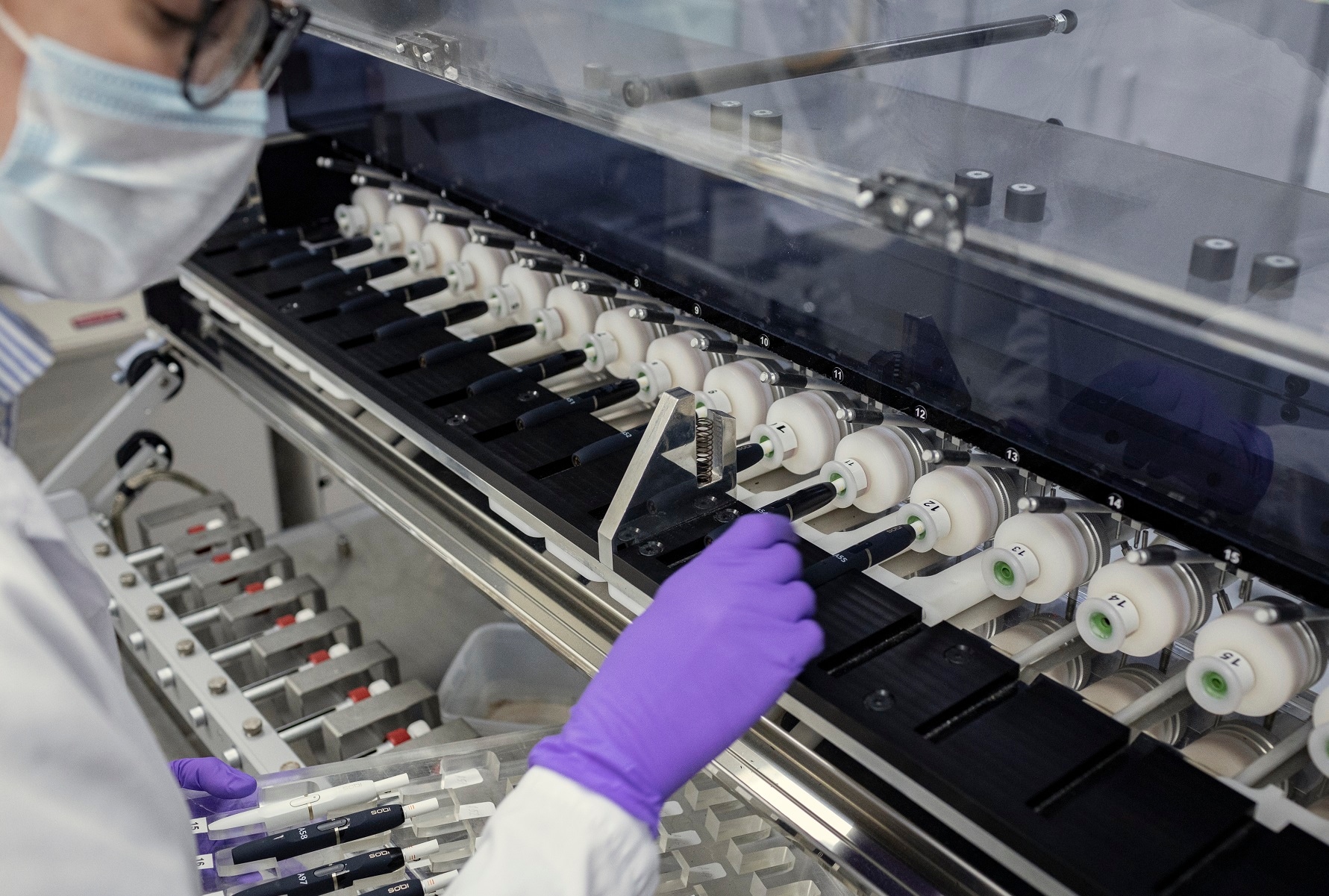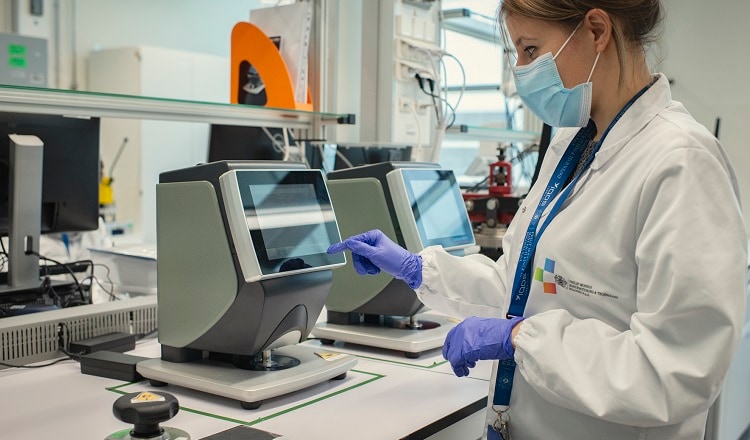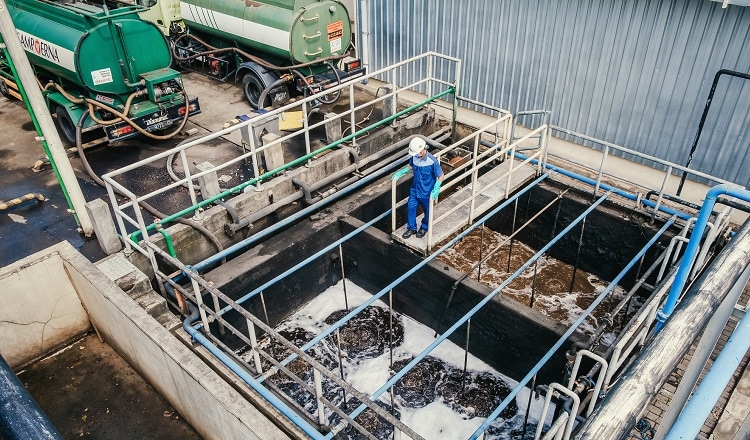Cigarette smoking causes serious health risks and disease, and is addictive. We take our duty as a manufacturer seriously to ensure that—for adults who continue to smoke—any additives used (e.g., flavorings) do not increase the health risks inherent to cigarette use.
For adult smokers who switch to products that do not combust tobacco, it is of paramount importance that these alternatives are scientifically substantiated to demonstrate that they present less risk to health than continued smoking, and also that they are developed, tested, and manufactured according to applicable regulations and standards to ensure consistent product integrity and quality.
Delivering a smoke-free future relies on the development and commercialization of products that meet both stringent scientific requirements and technical design criteria. Investments to maintain and continuously improve the reliability of our products enable us to protect our reputation and brand equity while complying with regulations.
Our approach
Our quality management system (QMS) covers all our products: Smoke-free and combustible. Governance and accountability for consistent product integrity, quality, and reliability sits at the highest management level at PMI and is guided by our QMS, as well as internal and external standards. Our work on product integrity and reliability is mainly carried out by teams in our product development, procurement, manufacturing operations, and quality organization departments. Their collective efforts ensure we preserve quality, from raw material to the retail shelf.
Our approach to product reliability starts with our contracted farmers and suppliers. We work with them to secure high-quality raw materials and components, applying robust procurement processes, detailed auditing, and rigorous quality assurance procedures.
Our factories are designed to manufacture our products to the highest quality standards, following the ISO 9001 certification principles. This includes, for example, the careful selection of materials that come in contact with semifinished and finished products during manufacturing and the appropriate training of operators.
Our manufacturing quality management systems are subject to inspection by authorities and certified bodies. Globally, a team of around 1,800 product quality associates ensures that quality assurance, control, and improvement covers incoming materials, semifinished components, and finished products across our global footprint. Additionally, we have more than 102 corporate quality professionals who establish and embed standards throughout our QMS processes. We supplement these measures with dedicated third-party quality management programs and by placing a PMI quality assurance colleague on-site at each key electronic manufacturing supplier of our smoke-free devices.
Product reliability also extends to the packaging, storage, and transport of finished goods to ensure they reach the consumer in proper condition. Packaging has a crucial role to play in this regard and also helps ensure the traceability and identification of our products so we can act promptly should issues arise. Each packaging unit has a unique serial number that allows us to trace the entire supply chain journey, from factory to market, enabling backward traceability in the case of product quality issues. Additionally, each device and consumables pack has a unique serial number. In the event of a product recall (of which there were none in 2021) or an identified quality incident, we can leverage this traceability to investigate the problem and undertake any necessary containment actions in an efficient and targeted manner.
Moreover, we focus on the sustainability and longevity of our products by embedding eco-design principles and post-use collection schemes. Learn more on page 109 of the Integrated Report.
Smoke-free products
Smoke-free products include heated tobacco and e-vapor products, which comprise consumables and electronic devices subject to strict design controls. The process ensures that the product is developed according to predefined and controlled criteria and demonstrates reduced toxicity compared with cigarette smoking. Any alterations to the product are made under a strict change management process that assesses the impact of the change on the product’s quality, safety, performance, and regulatory compliance. In addition, as part of product development, we apply use-hazard analysis. We assess the risks related to the intended use and foreseeable misuse of the product, and we implement appropriate mitigation measures.
Heat-not-burn devices
The electronic devices for our heat-not-burn product are manufactured according to internal standards and ISO 9001 principles and certified according to applicable regulations and standards. The suppliers of the devices’ electronic parts and components, including batteries, must also operate under these quality standards. Each finished device is subject to rigorous controls before shipment.
In case of consumer complaints regarding the devices, PMI has established a thorough monitoring process enabling early detection of consumer pain points; these insights are then used to improve our products and components.
Since the reliability and durability of devices contribute to sustainability outcomes, we strive to strike the right balance between extending a product’s lifetime in use (thus lowering demand on natural resources) and updating and improving the product’s effectiveness and competitiveness in the market.
Heated tobacco units
IQOS heated tobacco units (HTUs) are inserted into the device holder by the consumer. Each unit is composed of a tobacco plug (also containing a metal susceptor in the case of TEREA consumables), hollow acetate tube, polymer-film filter, cellulose acetate mouthpiece filter, and filter papers. The uniquely processed tobacco plug is made from a reconstituted blend of high-quality tobacco leaves. We disclose the ingredients of our heated tobacco units on our website.
The manufacturing of heated tobacco units demands high levels of precision and consistency. For instance, the diameter of the unit, as well as the properties of the cast leaf, are crucial to product performance. Heated tobacco units are also tested for stability, using standard protocols covering different temperature and humidity ranges. The design and packaging aim to preserve product quality and safety in the various conditions to which it may be subjected (read more on PMI Science).
E-vapor products
Our e-vapor devices use a cartridge containing an e-liquid. The product’s reliability depends on the integrity of the tank; if the tank is tampered with, the product could fail. We recognize a trade-off between product reliability and recyclability, but prioritize safety: We use closed tank systems in the development and commercialization of e-vapor products. We also test our packaging to ensure compliance with local regulations, including the EU Tobacco Products Directive, and we engage external agencies that test the integrity and safety of our e-liquid packaging.
Combustible products
Our combustible products are also subject to stringent product development controls. We strictly adhere to product specifications and regulations for cigarettes and apply further internal requirements to ensure the highest quality products. We disclose the ingredients used in our conventional products on our website. These ingredients undergo toxicological assessment to ensure their use does not increase the inherent toxicity of cigarette smoke. We keep abreast of strengthening or pending regulation, and a further regulatory compliance assessment is performed to ensure compliance with applicable regulations.
Besides tobacco ingredients, we use nontobacco materials such as cigarette paper, filters, and packaging materials in our products. These materials also undergo toxicological assessment, and we assess packaging materials following the main requirements for food contact materials.
We warn consumers about the health effects of our products. All advertising and consumer packaging for these products must contain clear and visible health warnings (read more about our marketing and sales practices [here]).

Product reliability—topic overview
read moreThis online content about our Integrated Report should be read in conjunction with PMI’s 2021 Integrated Report. The information and data presented here cover the 2021 calendar year or reflect status at December 31, 2021, worldwide, unless otherwise indicated. Where not specified, data come from PMI estimates. Please also refer to 'This report at a glance' on page 5 of the 2021 Integrated Report for more information. Aspirational targets and goals do not constitute financial projections, and achievement of future results is subject to risks, uncertainties and inaccurate assumptions, as outlined in our forward-looking and cautionary statements on page 252. In the 2021 Integrated Report and in related communications, the terms “materiality,” “material,” and similar terms, when used in the context of economic, environmental, and social topics, are defined in the referenced sustainability standards and are not meant to correspond to the concept of materiality under the U.S. securities laws and/or disclosures required by the U.S. Securities and Exchange Commission.



